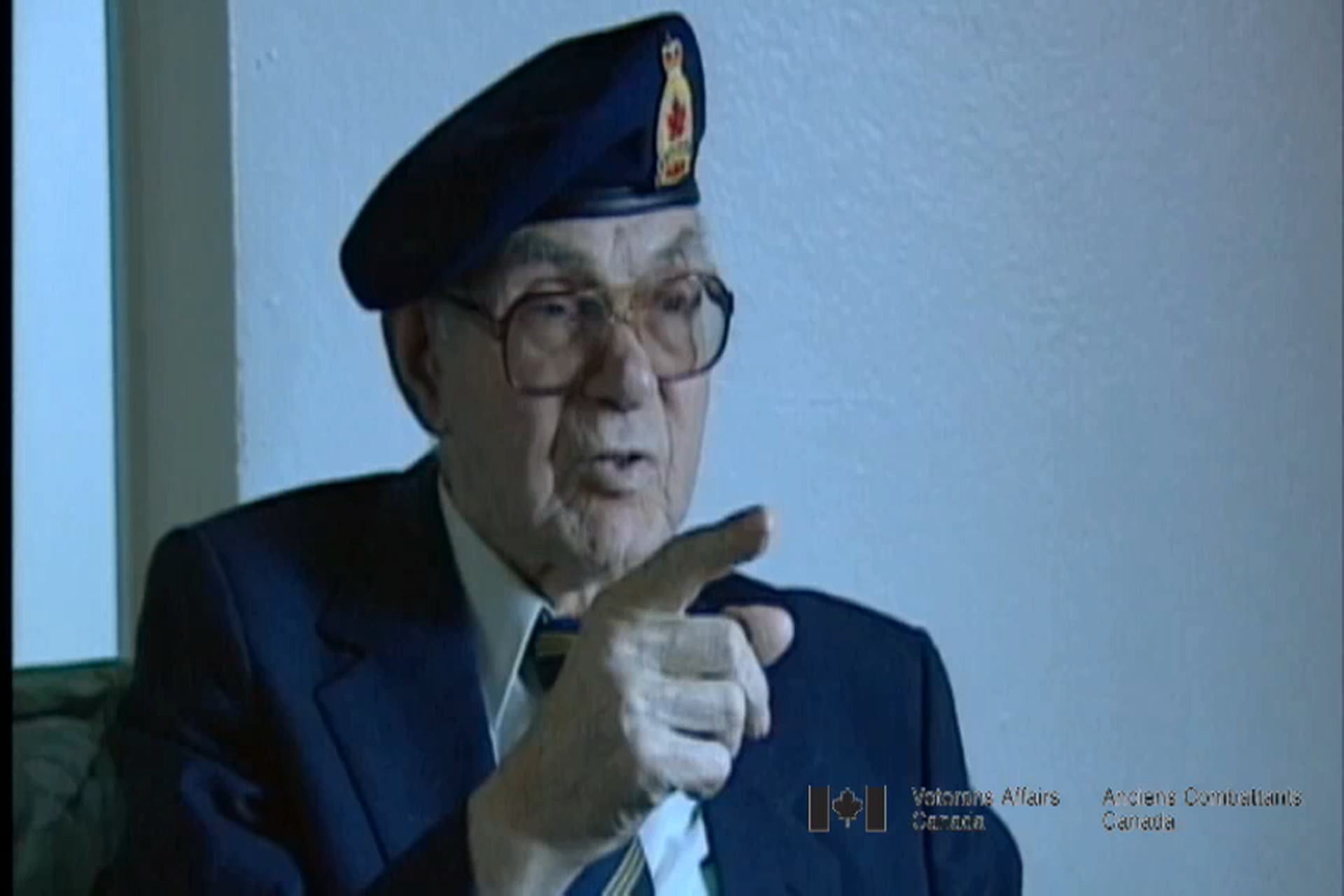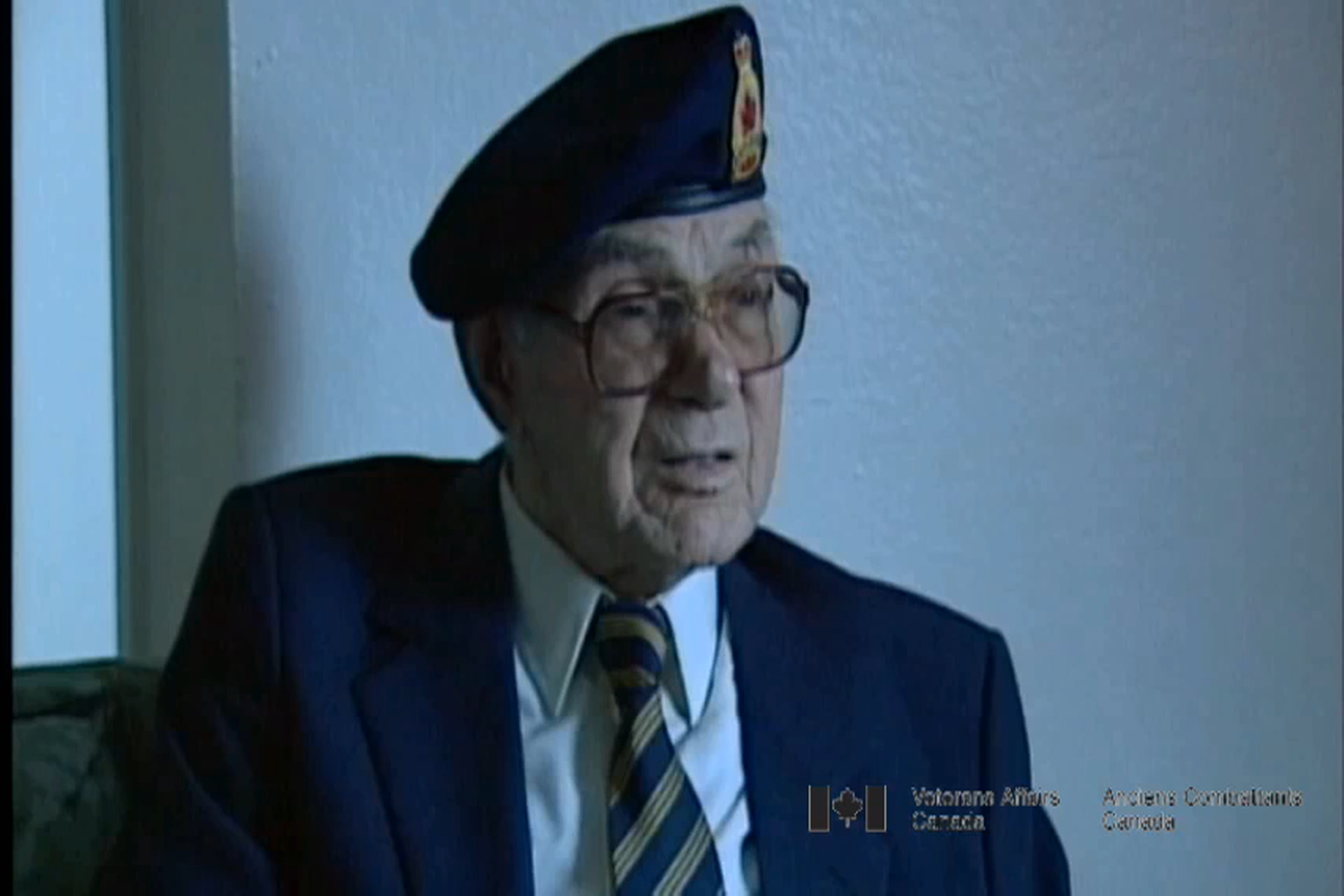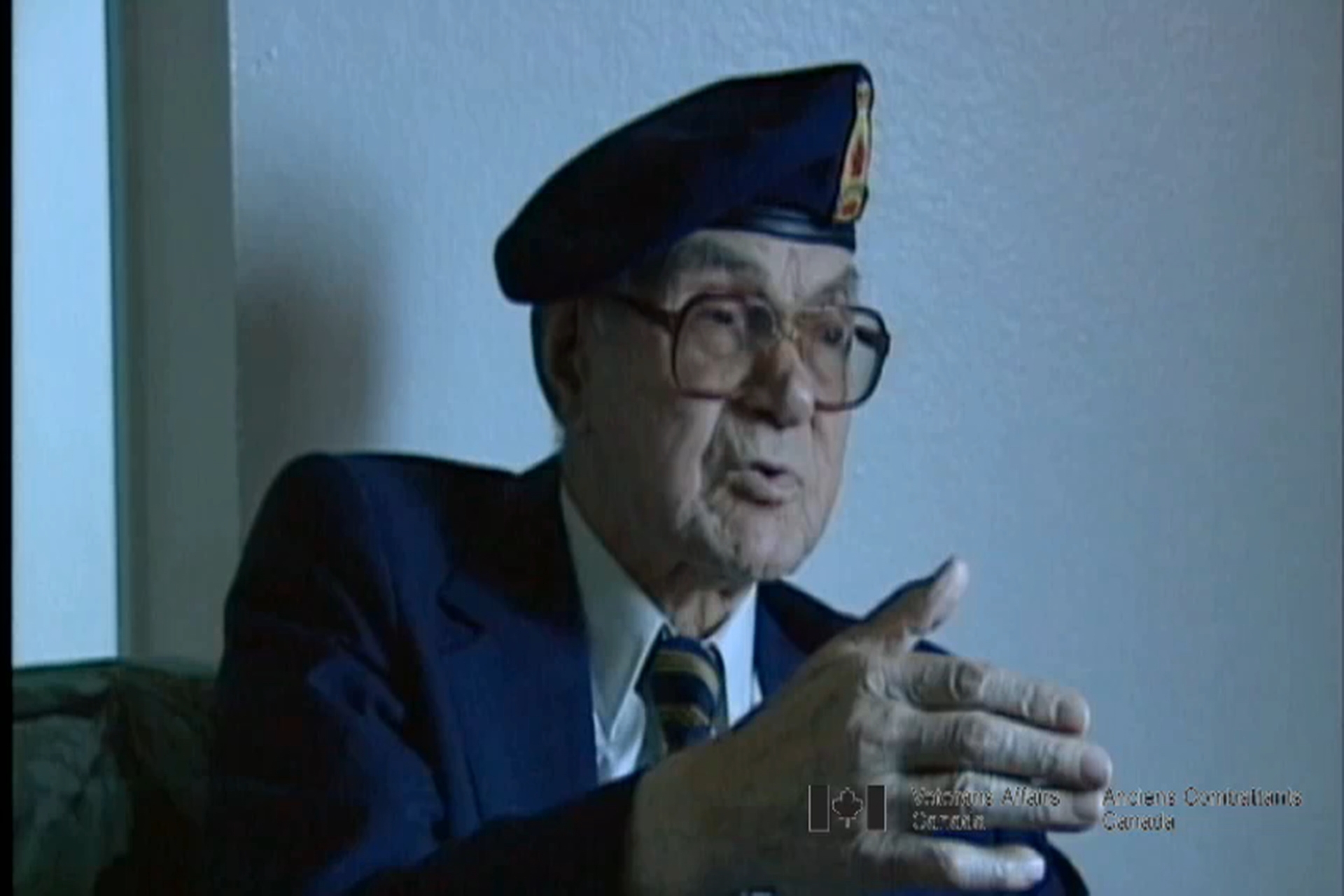Minesweeping
Heroes Remember
Minesweeping
Transcript
And the mines, floating mines, they got them see. And they'd be
up looking at the water, you wouldn't see the water. We had a,
the thing I can't name now, kites they call them. They had them
on the deck and there was a hook here you know. A cable in here
and they'd go across to the next ship, over there just the same
see. And then one would go up through the ship and this one down
here would cut off the cable, kind of made of (inaudible), and
he'd come up. The dangers were there. There were two of them,
one ahead of the other, see, and the cable would run and it'd
run right back to the other ship, bang. That was the danger.
Oh, we used the gun on him, as soon as we caught up see, and a rifle
sometimes, but we'd take the big one. And you had to be 200
yards away. That was the rules.
Description
Mr. Andrews describes the technique used to sever mine cables and the dangers involved. He goes on to describe how the floated mines were detonated either by rifle or cannon fire.
George Andrews
George Andrews was born in August, 1900 in Point Leamington, Newfoundland. He was the eldest of five sons and attended the Salvation Army and United Church schools to age thirteen, at which time he went to work in a lumber camp. Mr. Andrews enlisted in the Royal Navy in 1916, serving aboard both the HMS Loch Maree and HMS John Barry. Mr. Andrews contends that without the Royal Navy, the war would have been lost.
Meta Data
- Medium:
- Video
- Owner:
- Veterans Affairs Canada
- Duration:
- 1:33
- Person Interviewed:
- George Andrews
- War, Conflict or Mission:
- First World War
- Branch:
- Navy
- Rank:
- Ordinary Seaman
- Occupation:
- Gunner
Related Videos
- Date modified:






